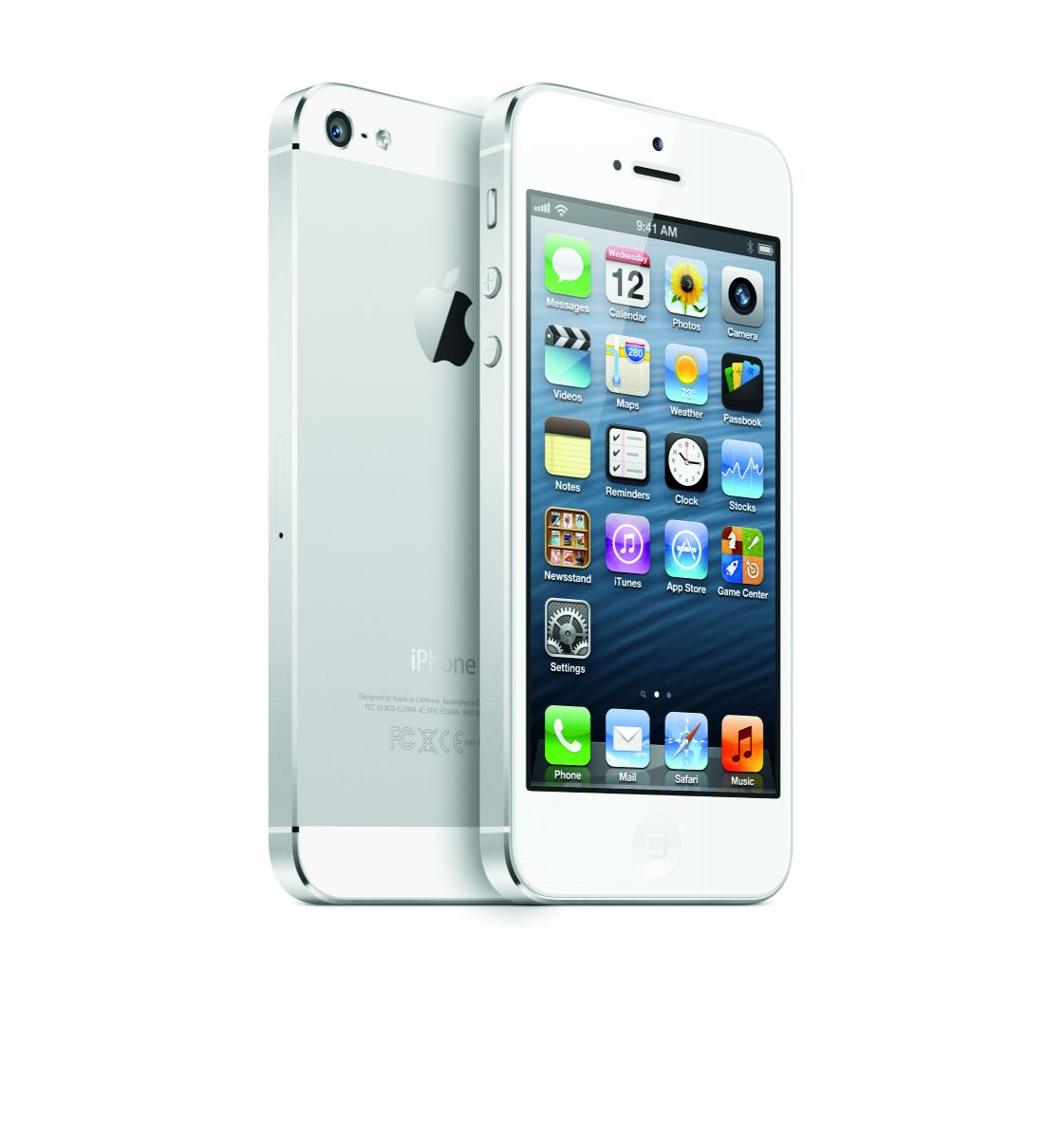As Apple takes center stage, iPhone 5 is evolutionary, not revolutionary
By Edwin Yapp September 14, 2012
- Much-vaunted iPhone seems to have lost its ‘wow’ factor, suggesting competitors have caught up
- Analysts believe Apple needs to innovate further or risk being matched, or even worse, outmatched
NEWS ANALYSIS WHILE the latest iteration of Apple's smartphone – the iPhone 5 – met the general expectations of gadget pundits and market talk, analysts were divided as to whether Apple can win the long smartphone game in this increasingly fickle consumer-driven world.
The Cupertino, California-based tech giant introduced the new iPhone in San Francisco on Wednesday (Thursday morning, Malaysian time) demonstrating all its bells and whistles, most of which however did not take the market by surprise.
 The new iPhone (pic) sports a newly designed anodized aluminum body shelled in a larger enclosure giving a 4-inch screen size (diagonally measured) compared to its predecessor’s 3.5-inch screen. The iPhone 5 is also 18% thinner than the 4S at 7.6mm and 20% lighter at 112 grams.
The new iPhone (pic) sports a newly designed anodized aluminum body shelled in a larger enclosure giving a 4-inch screen size (diagonally measured) compared to its predecessor’s 3.5-inch screen. The iPhone 5 is also 18% thinner than the 4S at 7.6mm and 20% lighter at 112 grams.
Amongst the more notable features is the support for the next generation wireless standard LTE (long term evolution), albeit in certain countries only due to different operating frequencies; a new digital connector in order to support its smaller dimension; improved Siri voice assistance; a new A6 chip under the hood that boasts of running two times faster than the 4S; and a claimed better battery life – eight hours of 4G web browsing.
For a more comprehensive look at the specifications, surf to Engadget for comparison.
But despite these new features, tech pundits and analysts remained mixed over whether the new iPhone has come up head-and-shoulders ahead of the competition.
A Reuters report noted that the new iPhone lacks the “offered few surprises to give Apple shares – already near record highs – another major kick.”
"There is not a ‘wow’ factor because everything you saw today is evolutionary. I do think they did enough to satisfy," Reuters quoted Michael Yoshikami, chief executive of wealth management company Destination Wealth Management, as saying.
Roger Cheng of CNET noted that when the iPhone 4 debuted in June 2010, it was the phone to own, as the Android phenomenon hadn't taken over yet. Nokia and Research In Motion, he added, were at the beginning of their quickly accelerating declines. The momentum was behind Apple and CEO Steve Jobs.
“Following a lengthier-than-expected upgrade cycle to the incrementally better iPhone 4S, and now the iPhone 5, things have changed. Android is pervasive, and Samsung now has a significant lead in the smartphone business with a franchise, the Galaxy S, that generates nearly as much buzz as the iPhone. Motorola is a part of Google.
“The iPhone is no longer leaps and bounds better than the competition and the obvious choice for consumers. Instead, rivals have caught up. The iPhone 5's main features – a larger display, access to 4G LTE, and an improved camera – can already be found on Android smartphones. For the first time, Apple can no longer stand apart from its smartphone competitors as a clear leader; it's right there in the middle of the fray."
A good upgrade, not great
An analyst Digital News Asia spoke to concurred with the pundits. Shalini Verma, principal analyst at Gartner Asia Pacific noted that seen in isolation, the iPhone 5 is not revolutionary, and at best, is a major upgrade.
“We are so used to seeing innovation from Apple that this is almost a disappointment,” she told Digital News Asia in an e-mail interview. “However, it is [still] good enough for users to upgrade to the iPhone 5.”
 Shalini (pic) noted that in many cases, such as size and LTE support, Apple is playing catch-up. The plus points for Apple is that it has maintained its aesthetic design and at the same time improved on durability through a metal back. Its retina display and an improved processor are also notable, she added.
Shalini (pic) noted that in many cases, such as size and LTE support, Apple is playing catch-up. The plus points for Apple is that it has maintained its aesthetic design and at the same time improved on durability through a metal back. Its retina display and an improved processor are also notable, she added.
However, the Gartner analyst said the iPhone 5 could run into issues if consumers really get into the nitty-gritty of these specifications.
“[But] we expect most iPhone users and those aspiring to be iPhone users tend to gloss over specifications,” she said. “LTE support certainly makes the iPhone 5 more comparable with a Samsung Galaxy S III but both [still] have their pros and cons.
“I think we can expect more signs from iPhone users who are waiting to upgrade to the latest phones.”
Additionally, Shalini said that Gartner expects Asia Pacific and Japan to contribute 59% of the total LTE connections driven by a massive ramp-up in markets like South Korea and Japan, while the North American market is expected to contribute 31% of LTE connections.
It’s clear that Apple had to ensure that the iPhone 5 is compatible with frequency bands across regions, she added.
Living on past glories?
Telecom researcher Ovum meanwhile took a more macro view suggesting that it will take more than the iPhone 5 to knock Google off the top spot in the consumer technology war.
In a press statement, the London-based firm said Apple needed to do much more than the widely expected hardware revamp of the iPhone to lead in the smartphone market.
The analyst firm said this conclusion is based on its new measure of success in the consumer technology industry – the Smart-Vendor Scorecard – which accompanies a 360-degree assessment of the major technology vendors’ capabilities and their influence over consumers and developers.
It added that though the new iPhone will be Apple’s most successful smartphone to date, without a redesign of the iOS user experience and underlying software platform in the next two years, Apple will find itself in a position similar to Nokia and RIM, which found themselves with outdated smartphone platforms that needed replacing.
Adam Leach, leader of Ovum’s devices and platforms practice, said: “Apple has successfully built the iPhone from a radical new entrant to the must-have smartphone. Whilst the company is still reaping the rewards of the brand equity of the iPhone, consumers are notoriously fickle when it comes to buying handsets.”
Leach noted that without the continued innovation, which the world is accustomed to from Apple, the company risks losing consumer appeal. The [original] iPhone, he added, re-defined the smartphone category in 2007 but it can’t rely on past successes to guarantee its future or rely on litigation to keep its competitors at bay.
“It has become clear that technology companies need to do more than just announce new versions and updates to existing offerings if they are set on owning every aspect of the consumer’s digital existence,” said Leach.
“It is therefore imperative for these companies to move outside their traditional areas of expertise; hardware companies have to build up their software and service expertise and vice-versa, or risk leaving the door open to their competitors.”


